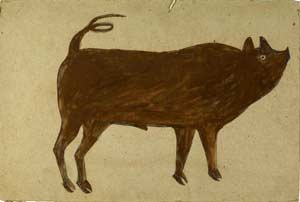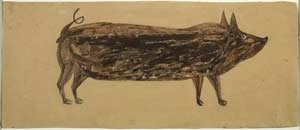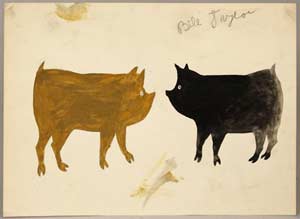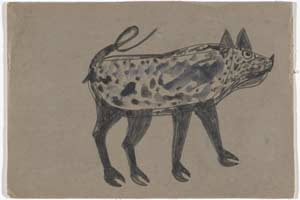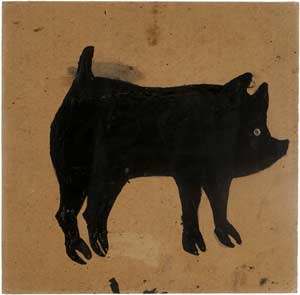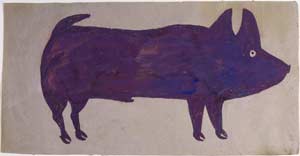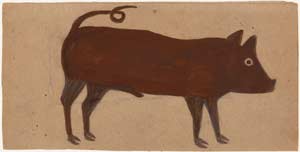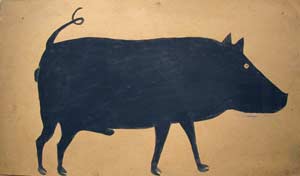United States, (1852?-1949)
About the Artist:
Bill Traylor, United States, (1852?-1949) was born a slave on an Alabama plantation and worked as a field hand and later in a shoe factory. In 1939 at the age of 84, he began making pencil drawings and paintings while sitting outside the Ross-Clayton Funeral Home on Monroe Street in Montgomery, AL.
Traylor was noticed by Charles Shannon, a painter who was living outside of Montgomery. Shannon became a great advocate of Traylor’s work, and helped support him by bringing supplies and visiting every week. Observing street life in Montgomery and recalling memories from his life on a farm, Traylor composed uniquely styled images of people, animals and abstract constructions. His works often displayed complex visual imagery and insightful aesthetic qualities.
Traylor had four productive years in Montgomery, then health concerns sent him moving around to live in the homes of his various children, scattered over the East coast. Traylor died in 1949 in Montgomery. Some 1200-1500 of his works were preserved in the possession of Charles Shannon. Today Traylor’s work is regarded as among the major triumphs of self-taught art of the 20th century. [DES-05/19]

